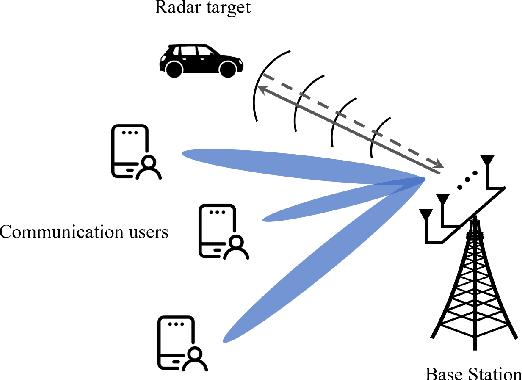Cramér-Rao Bound Analysis and Beamforming Design for Integrated Sensing and Communication with Extended Targets
Paper and Code
Jun 04, 2024



This paper studies an integrated sensing and communication (ISAC) system, where a multi-antenna base station transmits beamformed signals for joint downlink multi-user communication and radar sensing of an extended target (ET). By considering echo signals as reflections from valid elements on the ET contour, a set of novel Cram\'er-Rao bounds (CRBs) is derived for parameter estimation of the ET, including central range, direction, and orientation. The ISAC transmit beamforming design is then formulated as an optimization problem, aiming to minimize the CRB associated with radar sensing, while satisfying a minimum signal-to-interference-pulse-noise ratio requirement for each communication user, along with a 3-dB beam coverage constraint tailored for the ET. To solve this non-convex problem, we utilize semidefinite relaxation (SDR) and propose a rank-one solution extraction scheme for non-tight relaxation circumstances. To reduce the computation complexity, we further employ an efficient zero-forcing (ZF) based beamforming design, where the sensing task is performed in the null space of communication channels. Numerical results validate the effectiveness of the obtained CRB, revealing the diverse features of CRB for differently shaped ETs. The proposed SDR beamforming design outperforms benchmark designs with lower estimation error and CRB, while the ZF beamforming design greatly improves computation efficiency with minor sensing performance loss.
 Add to Chrome
Add to Chrome Add to Firefox
Add to Firefox Add to Edge
Add to Edge